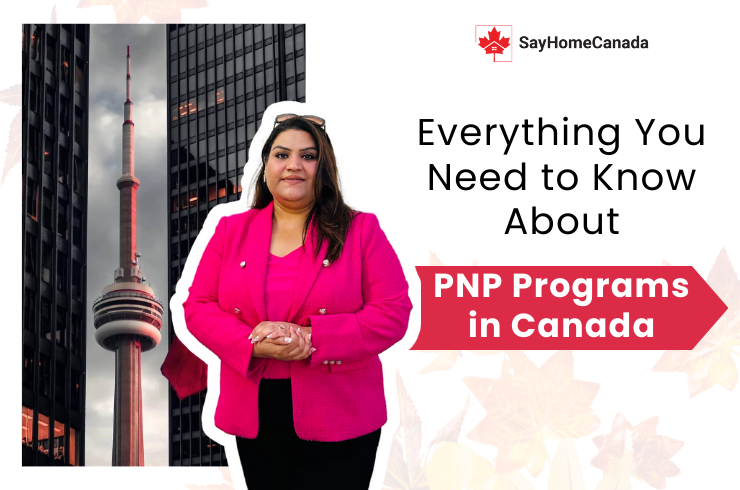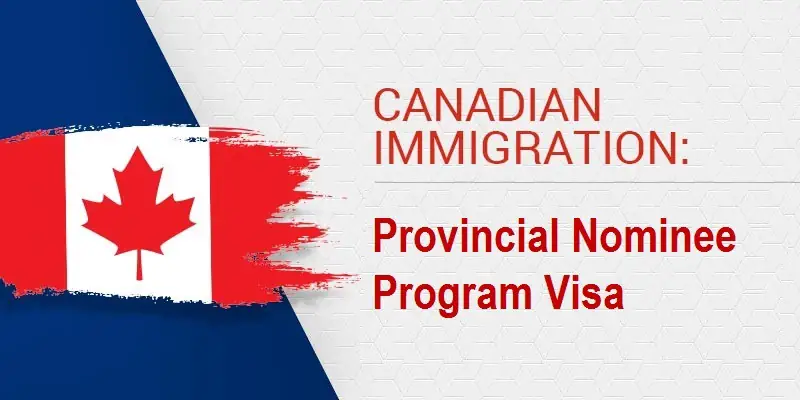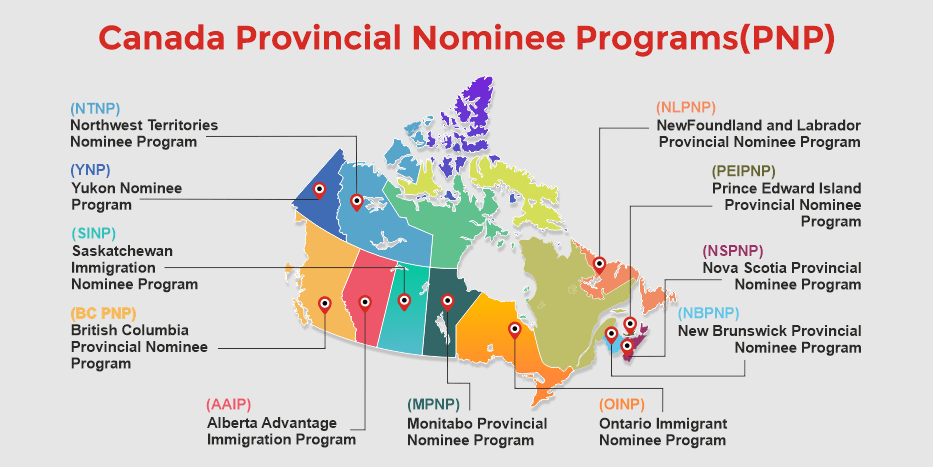
 PNP
PNP
Have you ever wondered what it takes to immigrate to Canada through a Provincial Nominee Program (PNP)? Whether you’re from Nigeria, Colombia, Ghana, Cameroon, India, or even Canada, navigating the PNP programs can be your gateway to a new life and career in one of Canada’s beautiful provinces. But with so many pathways and options, it can feel overwhelming to know where to start or how to make the best decision for your future.
By reading this guide, you’ll gain in-depth insights into Canada’s PNP programs, understand the eligibility criteria, and learn how to apply. This step-by-step approach will help simplify your journey, allowing you to confidently take the next step towards Canadian permanent residency.
A Provincial Nominee Program (PNP) is a specialized immigration program that allows Canadian provinces and territories to nominate individuals who want to immigrate and settle in their region. Each province has its own specific needs in terms of the labor market, economy, and demographics. By attracting skilled workers, entrepreneurs, and students, provinces ensure their local economies grow while offering immigrants a chance to build a life in Canada.
PNPs are ideal for those who might not meet the requirements of federal immigration programs like Express Entry, but have the skills, education, or work experience needed in a specific province. Whether you’re a tech professional from India, a healthcare worker from Cameroon, or a businessperson from Ghana, there’s a PNP stream that might be perfect for you.
Example:
“Sarah, an IT professional from Lagos, Nigeria, wanted to immigrate to Canada but didn’t qualify for Express Entry. After researching various PNP streams, she found that Ontario’s Tech Worker Stream was looking for exactly her skill set. Today, Sarah lives and works in Toronto, and is well on her way to permanent residency.”

Canada’s Provincial Nominee Programs offer several unique advantages compared to federal immigration programs. Here are a few reasons why a PNP might be the right pathway for you:
Targeted Opportunities in Specific Provinces
Each province tailors its PNP to attract the talent it needs most. This means your chances of being nominated increase significantly if you have the skills or experience a province is seeking. For example, Alberta often looks for workers in agriculture and oil industries, while British Columbia focuses on tech and healthcare.
Lower CRS Score Requirements
If you’re already in the Express Entry pool but have a lower Comprehensive Ranking System (CRS) score, receiving a provincial nomination can add 600 points to your profile. This boost almost guarantees you’ll receive an Invitation to Apply (ITA) for permanent residency.
For example: “A lower CRS score of 350 might not get you an ITA under the federal program, but with a provincial nomination, that score jumps to 950 – virtually guaranteeing you an ITA in the next draw.”
Freedom to Settle in Your Preferred Province
If you’ve always dreamed of living in a specific part of Canada—whether it’s for job opportunities, family, or lifestyle—PNPs give you the power to make that dream a reality. Maybe you’re drawn to the tech hubs in Toronto, the natural beauty of British Columbia, or the welcoming communities in Manitoba. With a PNP, you can make that decision for yourself.
“Mohammed, a mechanical engineer from Cameroon, wanted to move to a smaller city to raise his family. By applying through Manitoba’s Skilled Worker Stream, Mohammed was able to settle in Winnipeg, where job opportunities were abundant, and the community was welcoming.”
Diverse Immigration Pathways
PNPs offer numerous streams, making it easier to find a match for your personal and professional background. Whether you’re a skilled worker, international student, entrepreneur, or healthcare professional, there’s likely a PNP stream that aligns with your qualifications.
“Rajesh, a recent graduate from India, was able to stay in Canada after finishing his studies by applying through Ontario’s International Student Stream. This stream allowed him to secure a job in Ottawa, where he’s now building a successful career in software development.”

Each province has its own eligibility criteria depending on its economic and labor needs. However, most PNPs share some common requirements. Let’s break them down:
Educational Background
Most provinces require candidates to have completed a certain level of education. This typically means having a diploma or degree equivalent to Canadian education standards. If you have foreign credentials, you may need to get an Educational Credential Assessment (ECA) to verify them.
“Monica, an accountant from Ghana, needed to have her degree verified through an ECA before applying for Saskatchewan’s Occupations In-Demand stream. Once her education was assessed, her application was fast-tracked.”
Relevant Work Experience
You’ll need to demonstrate that you have relevant work experience in one of the province’s in-demand occupations. For example, provinces like Ontario or British Columbia might prioritize tech and healthcare workers, while Manitoba or Alberta might seek agricultural or manufacturing workers.
Language Proficiency
Proficiency in English or French is essential. You’ll need to meet the minimum language requirements, usually assessed through IELTS or TEF exams. The required score can vary depending on the stream and province.
Job Offer (Optional)
Some PNP streams require you to have a valid job offer from an employer in the province. However, many streams don’t require a job offer, especially if you’re applying through the Express Entry-linked streams or occupations in-demand categories.
“Karim, an electrical engineer from Nigeria, secured a job offer from a company in Calgary, Alberta, which made him eligible for Alberta’s Employer-Driven Stream. His application process was quick, and he was soon on his way to permanent residency.”
Intention to Settle in the Province
You must show a genuine intent to live and work in the province that nominates you. Provinces want to ensure that immigrants will contribute to their local economy and stay long-term.
“After receiving his nomination from New Brunswick, Diego from Colombia moved his family to Moncton, where they quickly became integrated into the community.”

Applying for a PNP involves several steps, and it’s crucial to follow the process carefully to ensure success. Here’s a detailed, step-by-step guide:
Research and Choose a Province
Start by researching the various PNP programs available. Consider factors like job opportunities, the local economy, lifestyle preferences, and family connections. For instance, British Columbia might be best for tech workers, while Alberta could be a better fit for those in engineering or oil industries.
“Ahmed from India researched several provinces and decided to apply for Nova Scotia’s PNP due to its growing demand for healthcare professionals.”
Check Eligibility
Once you’ve chosen a province, review the eligibility criteria for your chosen PNP stream. Ensure your profile matches the requirements in terms of education, work experience, language proficiency, and any other specific factors.
“Eva, a graphic designer from Cameroon, made sure her skills aligned with Ontario’s Employer Job Offer: Foreign Worker Stream before applying.”
Create an Express Entry Profile (if applicable)
For PNP streams linked to Express Entry, you’ll need to create an Express Entry profile and enter the pool of candidates. Once you’re in the pool, a provincial nomination will add 600 points to your CRS score, significantly improving your chances of receiving an ITA for permanent residency.
Submit an Expression of Interest (EOI)
If you’re applying for a non-Express Entry stream, you may need to submit an Expression of Interest (EOI) directly to the province. This is a way to express your interest in being nominated for permanent residency.
Receive a Provincial Nomination
If your application is selected, you’ll receive a provincial nomination, which adds those critical 600 points to your CRS score. This nomination confirms that the province has chosen you for immigration based on your skills and background.
Apply for Permanent Residency
Once you’ve received your provincial nomination, you can then apply for permanent residency through Immigration, Refugees, and Citizenship Canada (IRCC). Be prepared to submit documents, undergo medical exams, and provide biometrics as part of the federal process.
“After receiving her nomination from Saskatchewan, Sofia from Colombia was able to submit her PR application. In just a few months, she and her family were approved for permanent residency.”
Canada’s Provincial Nominee Program is a powerful pathway for those who have the right skills and the desire to settle in a specific province. Whether you’re from Nigeria, Ghana, Cameroon, India, or Colombia, understanding how PNPs work and identifying the right stream for you can be the key to achieving your dream of living and working in Canada.
Ready to take the next step? Contact SayHomeCanada to explore your PNP options and receive personalized guidance from our experts.
The PNP allows Canadian provinces and territories to nominate individuals for immigration, focusing on attracting workers whose skills are in demand in that region. Whether through Express Entry or direct nomination, PNP can significantly boost your chances of becoming a permanent resident.
Looking for more information? Contact SayHomeCanada to find the best option for you.
Provinces nominate candidates from the Express Entry pool who meet their specific criteria. A nomination adds 600 points to your CRS score, making it almost certain you’ll get an ITA in the next draw.
Want to improve your CRS score? Connect with our team today to learn how the PNP Express Entry stream can help.
Requirements vary by province but usually include education, work experience, language proficiency, and an intent to settle in the province. Some programs may also require a job offer.
Need help navigating the requirements? Speak with our experts for a free assessment of your profile.
Processing times vary depending on the province and the stream you apply through. On average, it takes a few months to a year. Express Entry-linked PNPs tend to be faster.
Curious about processing times? Get in touch for the latest updates on PNP timelines.
The process involves selecting a province, meeting eligibility requirements, submitting an EOI or applying directly, and finally, applying for permanent residency after receiving a nomination.
Ready to start your PNP journey? Contact SayHomeCanada and let us guide you through each step of the process.
Thank you for the response .
Let's Connect